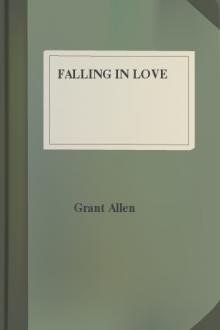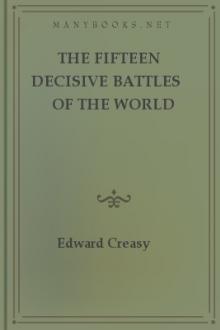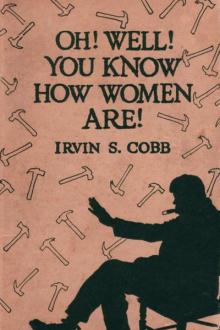Falling in Love by Grant Allen (different e readers .txt) 📕

- Author: Grant Allen
- Performer: -
Book online «Falling in Love by Grant Allen (different e readers .txt) 📕». Author Grant Allen
Up to the day, then, when Captain Cook and Sir Joseph Banks, landing for the first time on the coast of New South Wales, saw an animal with short front limbs, huge hind legs, a monstrous tail, and a curious habit of hopping along the ground (called by the natives a kangaroo), the opossums of America were the only pouched mammals known to the European world in any part of the explored continents. Australia, severed from all the rest of the earth—penitus toto orbe divisa—ever since the end of the secondary period, remained as yet, so to speak, in the secondary age so far as its larger life-elements were concerned, and presented to the first comers a certain vague and indefinite picture of what 'the world before the flood' must have looked like. Only it was a very remote flood; an antediluvian age separated from our own not by thousands, but by millions, of seasons.
To this rough approximate statement, however, sundry needful qualifications must be made at the very outset. No statement is ever quite correct until you have contradicted in minute detail about two-thirds of it.
In the first place there are a good many modern elements in the indigenous population of Australia; but then they are elements of the stray and casual sort one always finds even in remote oceanic islands. They are waifs wafted by accident from other places. For example, the flora is by no means exclusively an ancient flora, for a considerable number of seeds and fruits and spores of ferns always get blown by the wind, or washed by the sea, or carried on the feet or feathers of birds, from one part of the world to another. In all these various ways, no doubt, modern plants from the Asiatic region have invaded Australia at different times, and altered to some extent the character and aspect of its original native vegetation. Nevertheless, even in the matter of its plants and trees, Australia must still be considered a very old-fashioned and stick-in-the-mud continent. The strange puzzle-monkeys, the quaint-jointed casuarinas (like horsetails grown into big willows), and the park-like forests of blue gum-trees, with their smooth stems robbed of their outer bark, impart a marvellously antiquated and unfamiliar tone to the general appearance of Australian woodland. All these types belong by birth to classes long since extinct in the larger continents. The scrub shows no turfy greensward; grasses, which elsewhere carpet the ground, were almost unknown till introduced from Europe; in the wild lands, bushes, and undershrubs of ancient aspect cover the soil, remarkable for their stiff, dry, wiry foliage, their vertically instead of horizontally flattened leaves, and their general dead blue-green or glaucous colour. Altogether, the vegetation itself, though it contains a few more modern forms than the animal world, is still essentially antique in type, a strange survival from the forgotten flora of the chalk age, the oolite, and even the lias.
Again, to winged animals, such as birds and bats and flying insects, the ocean forms far less of a barrier than it does to quadrupeds, to reptiles, and to fresh-water fishes. Hence Australia has, to some extent, been invaded by later types of birds and other flying creatures, who live on there side by side with the ancient animals of the secondary pattern. Warblers, thrushes, flycatchers, shrikes, and crows must all be comparatively recent immigrants from the Asiatic mainland. Even in this respect, however, the Australian life-region still bears an antiquated and undeveloped aspect. Nowhere else in the world do we find those very oldest types of birds represented by the cassowaries, the emus, and the mooruk of New Britain. The extreme term in this exceedingly ancient set of creature is given us by the wingless bird, the apteryx or kiwi of New Zealand, whose feathers nearly resemble hair, and whose grotesque appearance makes it as much a wonder in its own class as the puzzle-monkey and the casuarina are among forest trees. No feathered creatures so closely approach the lizard-tailed birds of the oolite or the toothed birds of the cretaceous period as do these Australian and New Zealand emus and apteryxes. Again, while many characteristic Oriental families are quite absent, like the vultures, woodpeckers, pheasants and bulbuls, the Australian region has many other fairly ancient birds, found nowhere else on the surface of our modern planet. Such are the so-called brush turkeys and mound builders, the only feathered things that never sit upon their own eggs, but allow them to be hatched, after the fashion of reptiles, by the heat of the sand or of fermenting vegetable matter. The piping crows, the honeysuckers, the lyre-birds, and the more-porks are all peculiar to the Australian region. So are the wonderful and æsthetic bower-birds. Brush-tongued lories, black cockatoos, and gorgeously coloured pigeons, though somewhat less antique, perhaps, in type, give a special character to the bird-life of the country. And in New Guinea, an isolated bit of the same old continent, the birds of paradise, found nowhere else in the whole world, seem to recall some forgotten Eden of the remote past, some golden age of Saturnian splendour. Poetry apart, into which I have dropped for a moment like Mr. Silas Wegg, the birds of paradise are, in fact, gorgeously dressed crows, specially adapted to forest life in a rich fruit-bearing tropical country, where food is abundant and enemies unknown.
Last of all, a certain small number of modern mammals have passed over to Australia at various times by pure chance. They fall into two classes—the rats and mice, who doubtless got transported across on floating logs or balks of timber; and the human importations, including the dog, who came, perhaps on their owners' canoes, perhaps on the wreck and débris of inundations. Yet even in these cases again, Australia still maintains its proud pre-eminence as the most antiquated and unprogressive of continents. For the Australian black-fellow must have got there a very long time ago indeed; he belongs to an extremely ancient human type, and strikingly recalls in his jaws and skull the Neanderthal savage and other early prehistoric races; while the woolly-headed Tasmanian, a member of a totally distinct human family, and perhaps the very lowest sample of humanity that has survived to modern times, must have crossed over to Tasmania even earlier still, his brethren on the mainland having no doubt been exterminated later on when the stone-age Australian black-fellows first got cast ashore upon the continent inhabited by the yet more barbaric and helpless negrito race. As for the dingo, or Australian wild dog, only half domesticated by the savage natives, he represents a low ancestral dog type, half wolf and half jackal, incapable of the higher canine traits, and with a suspicious, ferocious, glaring eye that betrays at once his uncivilisable tendencies.
Omitting these later importations, however—the modern plants, birds, and human beings—it may be fairly said that Australia is still in its secondary stage, while the rest of the world has reached the tertiary and quaternary periods. Here again, however, a deduction must be made, in order to attain the necessary accuracy. Even in Australia the world never stands still. Though the Australian animals are still at bottom the European and Asiatic animals of the secondary age, they are those animals with a difference. They have undergone an evolution of their own. It has not been the evolution of the great continents; but it has been evolution all the same; slower, more local, narrower, more restricted, yet evolution in the truest sense. One might compare the difference to the difference between the civilisation of Europe and the civilisation of Mexico or Peru. The Mexicans, when Cortez blotted out their indigenous culture, were still, to be sure, in their stone age; but it was a very different stone age from that of the cave-dwellers or mound builders in Britain. Even so, though Australia is still zoologically in the secondary period, it is a secondary period a good deal altered and adapted in detail to meet the wants of special situations.
The oldest types of animals in Australia are the ornithorhynchus and the echidna, the 'beast with a bill,' and the 'porcupine ant-eater' of popular natural history. These curious creatures, genuine living fossils, occupy in some respects an intermediate place between the mammals on the one hand and the birds and lizards on the other. The echidna has no teeth, and a very bird-like skull and body; the ornithorhynchus has a bill like a duck's, webbed feet, and a great many quaint anatomical peculiarities which closely ally it to the birds and reptiles. Both, in fact, are early arrested stages in the development of mammals from the old common vertebrate ancestor; and they could only have struggled on to our own day in a continent free from the severe competition of the higher types which have since been evolved in Europe and Asia. Even in Australia itself the ornithorhynchus and echidna have had to put up perforce with the lower places in the hierarchy of nature. The first is a burrowing and aquatic creature, specialised in a thousand minute ways for his amphibious life and queer subterranean habits; the second is a spiny hedgehog-like nocturnal prowler, who buries himself in the earth during the day, and lives by night on insects which he licks up greedily with his long ribbon-like tongue. Apart from the specialisations brought about by their necessary adaptation to a particular niche in the economy of life, these two quaint and very ancient animals probably preserve for us in their general structure the features of an extremely early descendant of the common ancestor from whom mammals, birds, and reptiles alike are originally derived.
The ordinary Australian pouched mammals belong to far less ancient types than ornithorhynchus and echidna, but they too are very old in structure, though they have undergone an extraordinary separate evolution to fit them for the most diverse positions in life. Almost every main form of higher mammal (except the biggest ones) has, as it were, its analogue or representative among the marsupial fauna of the Australasian region fitted to fill the same niche in nature. For instance, in the blue gum forests of New South Wales a small animal inhabits the trees, in form and aspect exactly like a flying squirrel. Nobody who was not a structural and anatomical naturalist would ever for a moment dream of doubting its close affinity to the flying squirrels of the American woodlands. It has just the same general outline, just the same bushy tail, just the same rough arrangement of colours, and just the same expanded parachute-like membrane stretching between the fore and hind limbs. Why should this be so? Clearly because both animals have independently adapted themselves to the same mode of life under the same general circumstances. Natural selection, acting upon unlike original types, but in like conditions, has produced in the end very similar results in both cases. Still, when we come to examine the more intimate underlying structure of the two animals, a profound fundamental difference at once exhibits itself. The one is distinctly a true squirrel, a rodent of the rodents, externally adapted to an arboreal existence; the other is equally a true phalanger, a marsupial of the marsupials, which has independently undergone on his own account very much the same adaptation, for very much the same reasons. Just so a dolphin looks externally very like a fish, in head and tail and form and movement; its flippers closely resemble fins; and nothing about it seems to differ very markedly from the outer aspect of a shark or a codfish. But in reality it has no gills and no swim-bladder; it lays no eggs; it does not own





Comments (0)